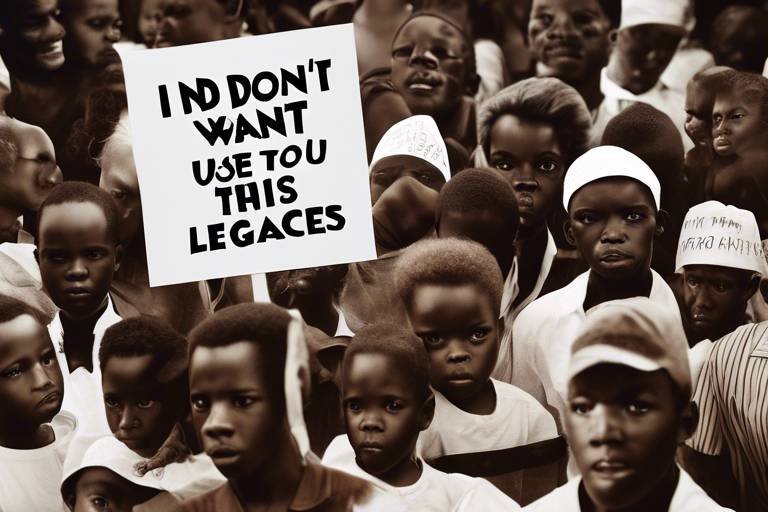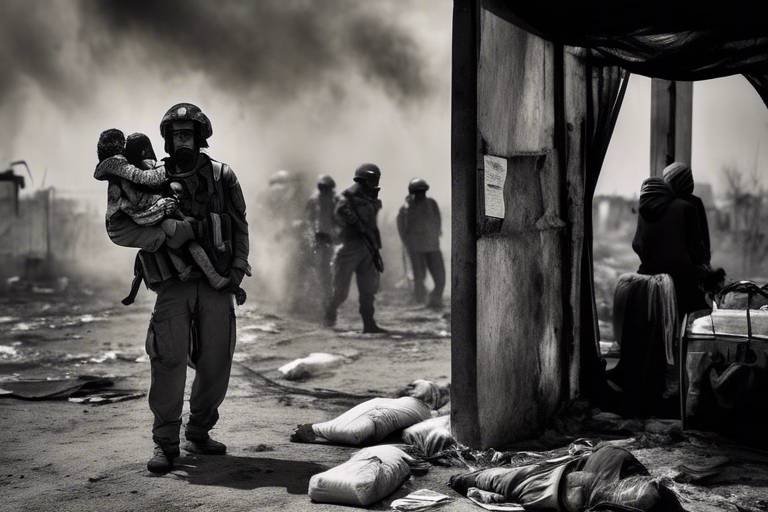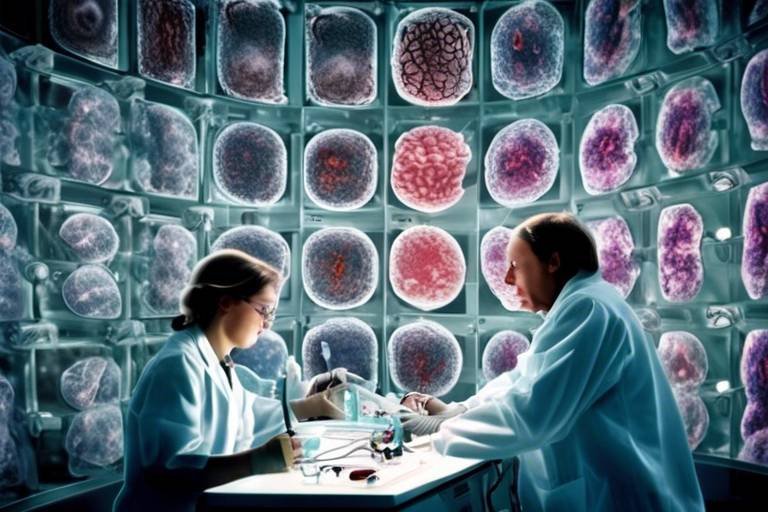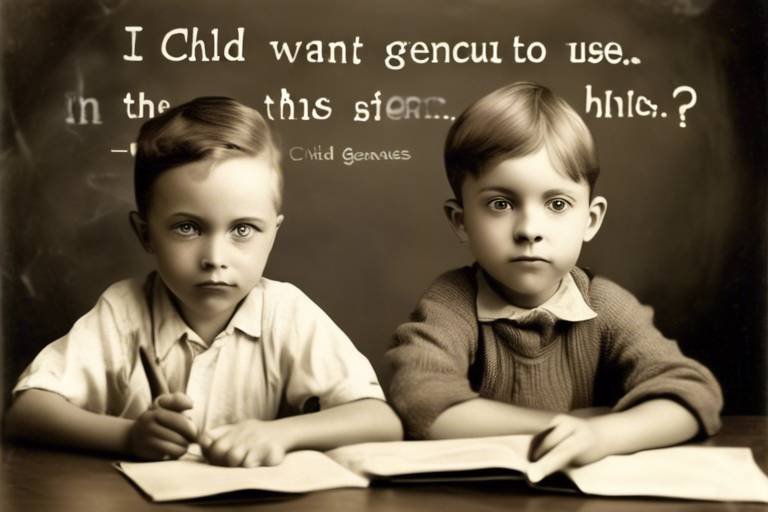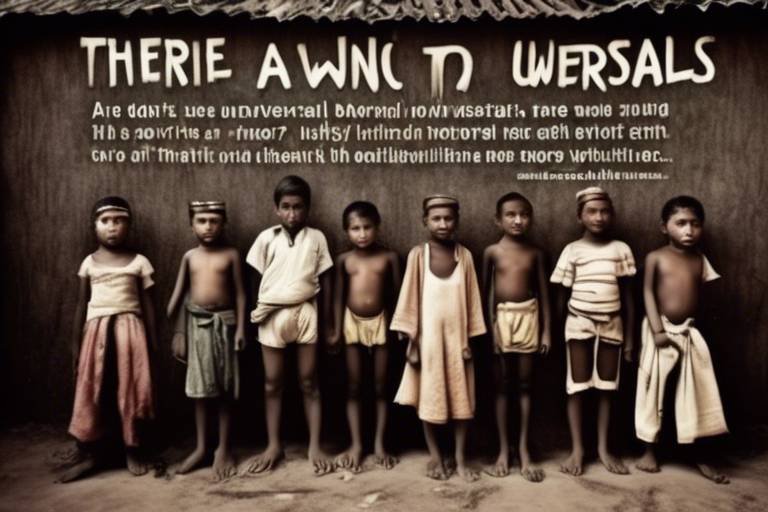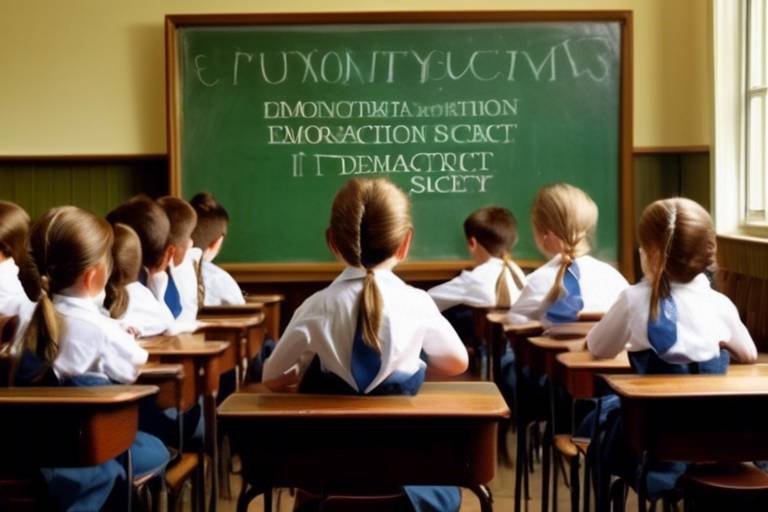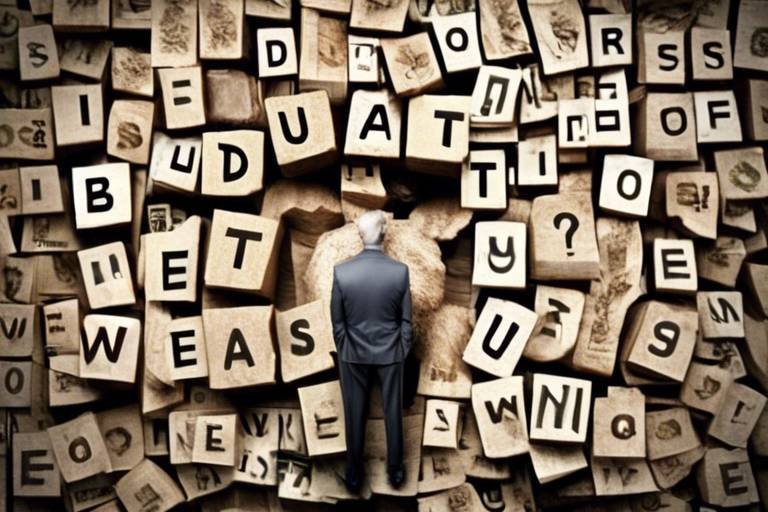The Morality of Human Trafficking - A Criminal Analysis
Human trafficking is not just a crime; it is a profound violation of human rights that shakes the very foundation of our morality. It’s a shadowy world where individuals, often the most vulnerable among us, are exploited for profit. Imagine waking up one day to find out that your freedom has been stripped away, and you're trapped in a nightmare with no escape. This is the grim reality for millions of victims worldwide. In this article, we will navigate the treacherous waters of human trafficking, dissecting its moral implications, the legal frameworks designed to combat it, and the societal impacts that ripple through communities. By understanding the gravity of this crime, we can begin to grasp its effects on individuals and societies as a whole.
At its core, human trafficking is a multifaceted crime that involves the exploitation of individuals through coercion, deception, or force. It can take many forms, including sex trafficking, labor trafficking, and even organ trafficking. The United Nations defines human trafficking as the act of recruiting, transporting, transferring, harboring, or receiving persons by means of threat, use of force, or other forms of coercion. The global scale of this issue is staggering, with estimates suggesting that over 40 million people are victims of human trafficking at any given time. These numbers are not just statistics; they represent real lives, real pain, and a desperate need for change.
The legal landscape surrounding human trafficking varies significantly across nations, creating a patchwork of laws that can either hinder or help the fight against this crime. International laws and treaties, such as the Palermo Protocol, set the stage for global cooperation but often lack the enforcement mechanisms needed to be effective. Countries are bound by these agreements to take action, yet the implementation of laws can be inconsistent at best. Local regulations may also differ, affecting how victims are treated and how traffickers are prosecuted. This inconsistency can create loopholes that traffickers exploit, making it imperative for nations to strengthen their legal frameworks.
International agreements, like the Palermo Protocol, play a vital role in addressing human trafficking. These treaties aim to promote global cooperation and establish minimum standards for the prevention and punishment of trafficking offenses. However, the effectiveness of these treaties often hinges on the willingness of individual countries to comply with their obligations. For instance, while many nations have signed the protocol, the actual implementation of its principles can vary widely. This discrepancy raises questions about the accountability of governments in protecting their citizens from trafficking.
In addition to international treaties, various regions have implemented specific agreements to tackle human trafficking. These regional collaborations often focus on shared challenges and strategies, fostering a more coordinated response to trafficking issues. For example, the European Union has established frameworks to enhance cross-border cooperation among member states. Such agreements are crucial in addressing the transnational nature of trafficking, as they enable countries to work together to close the gaps that traffickers often exploit.
National laws are the backbone of any effort to combat human trafficking. Countries must enact and enforce robust legal frameworks that not only penalize traffickers but also protect and support victims. However, challenges persist in prosecution, often due to a lack of resources, training, and awareness among law enforcement agencies. In many cases, victims are treated as criminals rather than as individuals in need of assistance. This misalignment highlights the urgent need for comprehensive training and resources to ensure that laws are applied effectively and humanely.
Support systems for victims are critical for recovery and reintegration into society. These systems can include legal aid, counseling, rehabilitation programs, and safe housing. Without adequate support, victims may find it challenging to rebuild their lives after experiencing such trauma. Communities and organizations play a vital role in providing these services, helping victims regain their autonomy and dignity.
The effects of human trafficking extend far beyond the individual victims; they can destabilize entire communities and contribute to widespread social and economic issues. Trafficking perpetuates cycles of poverty and violence, creating an environment where exploitation can thrive. The societal stigma surrounding victims often leads to isolation and further marginalization, making it difficult for them to reintegrate into their communities.
The economic implications of human trafficking are profound, impacting local and national economies alike. Trafficking not only exploits individuals but also undermines legitimate labor markets, driving down wages and creating unfair competition for businesses that adhere to ethical practices. Additionally, the public health systems can be strained as they deal with the aftermath of trafficking, including healthcare needs and the social services required for recovery.
In response to the growing crisis of human trafficking, many communities have initiated grassroots campaigns and awareness programs. These community-driven efforts are essential in combating trafficking and supporting victims. By fostering a culture of awareness and vigilance, communities can help prevent trafficking and create safe environments for all individuals.
The morality of human trafficking raises significant ethical questions that challenge our societal values. What responsibilities do individuals, governments, and organizations have in preventing trafficking and aiding victims? It’s a question that demands reflection and action. As we navigate this complex issue, we must consider the moral imperatives that compel us to stand against such exploitation.
Businesses also have a crucial role in combating human trafficking. The ethical obligations of corporations extend beyond profit margins; they must ensure that their supply chains are free from exploitation. By adopting transparent practices and holding themselves accountable, companies can contribute to the fight against trafficking and promote ethical labor practices.
Raising awareness about human trafficking is vital for prevention. Education empowers communities to recognize the signs of trafficking and take action. By fostering a culture of awareness, we can mobilize individuals to become advocates for change, ensuring that trafficking is not tolerated in any form.
- What is human trafficking? Human trafficking is the exploitation of individuals through coercion, deception, or force for various purposes, including forced labor and sexual exploitation.
- How can I help combat human trafficking? You can help by raising awareness, supporting local organizations that assist victims, and advocating for stronger laws and policies.
- What are the signs of human trafficking? Signs include individuals who appear fearful, submissive, or controlled, as well as those who lack personal identification or are isolated from others.
- Are there support systems for victims? Yes, many organizations provide legal aid, counseling, and rehabilitation programs to support victims of human trafficking.

Understanding Human Trafficking
Human trafficking is a multifaceted crime that transcends borders, cultures, and societal norms. It involves the exploitation of individuals through various means, including coercion, deception, and manipulation. At its core, trafficking is about power—specifically, the power to control and exploit vulnerable individuals for profit. The United Nations defines human trafficking as the recruitment, transportation, transfer, harboring, or receipt of persons, by means of threat or use of force, coercion, abduction, fraud, deception, abuse of power, or a position of vulnerability.
This heinous act manifests in several forms, each with its unique characteristics and implications. The most common types include:
- Sex Trafficking: This involves the exploitation of individuals for commercial sex acts through force, fraud, or coercion.
- Labor Trafficking: Victims are forced to work under threats of violence or other forms of coercion, often in hazardous conditions.
- Child Trafficking: This targets minors, placing them in exploitative situations, often for labor or sexual exploitation.
Globally, human trafficking is an alarming issue, with millions of individuals falling victim each year. According to the International Labour Organization, there are an estimated 40.3 million victims of human trafficking worldwide, with women and children making up a significant portion of those affected. These statistics paint a grim picture of a crime that continues to thrive in the shadows of society, often going unnoticed until it becomes a national crisis.
Understanding the scale and complexity of human trafficking is essential for developing effective strategies to combat it. The victims of trafficking come from all walks of life, and their stories often share common threads of desperation and vulnerability. Many are lured by the promise of a better life, only to find themselves trapped in a cycle of exploitation and abuse. This exploitation not only affects the victims but also has significant repercussions for communities and societies at large.
As we dive deeper into the intricacies of human trafficking, it becomes evident that addressing this issue requires a comprehensive approach that includes legal frameworks, victim support systems, and community involvement. The fight against human trafficking is not just about punishing the perpetrators; it is also about empowering victims and preventing future exploitation. By understanding the root causes and manifestations of this crime, we can begin to dismantle the systems that allow it to flourish.

The Legal Framework
When we talk about the legal framework surrounding human trafficking, it’s like navigating a complex maze where laws, regulations, and treaties intersect in various ways. Each country has its own set of laws, but the common goal remains: to combat trafficking and protect the rights of victims. Understanding this framework is crucial because it not only defines what constitutes trafficking but also outlines the responsibilities of governments and organizations in addressing this heinous crime.
At the international level, treaties and agreements serve as the backbone of efforts to combat human trafficking. One of the most significant agreements is the Palermo Protocol, which was adopted by the United Nations in 2000. This protocol aims to promote cooperation among nations and provides a comprehensive framework for combating trafficking in persons, especially women and children. It emphasizes the need for countries to adopt legislation that criminalizes trafficking and to implement measures that protect and support victims.
International treaties like the Palermo Protocol are essential in creating a unified approach to human trafficking. They set the stage for countries to work together, share information, and develop best practices. The effectiveness of these treaties, however, often hinges on the commitment of individual nations to enact and enforce corresponding laws. While some countries have made significant strides in aligning their laws with international standards, others still lag behind, creating gaps that traffickers can exploit.
In addition to international treaties, various regions have established specific agreements to tackle human trafficking. For instance, the European Union has implemented directives that require member states to develop strong legal frameworks to combat trafficking. These regional agreements are crucial, as they allow for tailored approaches that consider the unique cultural and socio-economic contexts of different areas. They also facilitate better collaboration among neighboring countries, which is vital since trafficking often crosses borders.
On the national level, legislation plays a pivotal role in the fight against human trafficking. Countries like the United States have enacted laws such as the Trafficking Victims Protection Act (TVPA), which provides tools for law enforcement to combat trafficking and offers protections for victims. However, the enforcement of these laws can be inconsistent, with many countries facing challenges such as lack of resources, corruption, and inadequate training for law enforcement personnel. This inconsistency can hinder efforts to prosecute traffickers and protect victims effectively.
While laws are essential, they must be complemented by robust support systems for victims. Legal frameworks should not only focus on punishment for traffickers but also prioritize the recovery and reintegration of victims into society. This includes providing access to legal aid, counseling, and rehabilitation programs. Many countries are beginning to recognize the importance of these services, but there is still a long way to go in ensuring that all victims receive the support they need.
In summary, the legal framework surrounding human trafficking is multifaceted and requires a concerted effort from international bodies, national governments, and local organizations. As we continue to explore the complexities of this issue, it is vital to remember that laws alone cannot eradicate trafficking; they must be supported by effective implementation and victim-centered approaches to truly make a difference.
- What is human trafficking? Human trafficking is the illegal trade of humans for the purposes of forced labor, sexual exploitation, or other forms of exploitation.
- How do international treaties help combat human trafficking? International treaties establish common standards and encourage cooperation among countries to address trafficking effectively.
- What role do national laws play in fighting human trafficking? National laws define trafficking, outline penalties for traffickers, and establish protections for victims, but their effectiveness depends on enforcement.
- Why is victim support important? Victim support is crucial for recovery and reintegration, helping individuals rebuild their lives after experiencing trauma from trafficking.

International Treaties
International treaties serve as the backbone of global efforts to combat human trafficking, establishing a framework for cooperation and accountability among nations. One of the most significant agreements in this realm is the Palermo Protocol, officially known as the United Nations Protocol to Prevent, Suppress and Punish Trafficking in Persons, especially Women and Children. Adopted in 2000, this protocol aims to create a comprehensive approach to trafficking, emphasizing prevention, protection, and prosecution. It encourages countries to adopt laws that criminalize trafficking and to implement measures to protect and assist victims.
But the Palermo Protocol is not alone. Various international treaties and conventions complement its objectives, such as:
- The Convention on the Rights of the Child (1989) - Focuses on protecting children from exploitation and trafficking.
- The Convention on the Elimination of All Forms of Discrimination Against Women (1979) - Addresses issues related to the trafficking of women and girls.
- The International Labour Organization's Forced Labour Convention (1930) - Aims to eliminate all forms of forced labor, including trafficking.
These treaties collectively underscore the need for a coordinated international response to human trafficking. They not only provide a legal framework but also encourage nations to share best practices and resources. However, the effectiveness of these treaties often depends on the political will of individual countries to implement and enforce the laws derived from them. Many nations face challenges such as inadequate resources, corruption, and lack of awareness, which can hinder their ability to combat trafficking effectively.
Moreover, the success of these international treaties hinges on the collaboration between governments, non-governmental organizations (NGOs), and community groups. By working together, these entities can create a robust support system for victims and raise awareness about the realities of human trafficking. For instance, through joint initiatives, countries can share intelligence on trafficking networks and develop training programs for law enforcement officials.
In conclusion, while international treaties like the Palermo Protocol have laid a strong foundation for combating human trafficking, their true potential can only be realized through dedicated implementation and cooperation among nations. The road ahead is challenging, but with collective efforts and a commitment to uphold human rights, we can hope to make significant strides in eradicating this heinous crime.
- What is human trafficking? Human trafficking involves the exploitation of individuals through coercion or deception, often for labor or sexual exploitation.
- What are the main international treaties addressing human trafficking? Significant treaties include the Palermo Protocol, the Convention on the Rights of the Child, and the Forced Labour Convention.
- How can individuals help combat human trafficking? Raising awareness, supporting local NGOs, and reporting suspicious activities are ways individuals can contribute to the fight against trafficking.

Regional Agreements
Regional agreements are pivotal in the fight against human trafficking, as they foster collaboration among neighboring countries to address this heinous crime more effectively. These agreements often encompass a range of strategies, from legal harmonization to joint law enforcement operations, aimed at enhancing the collective response to trafficking. For instance, the European Union has established frameworks that not only focus on the criminalization of trafficking but also emphasize victim protection and support. Such comprehensive approaches are essential, as they recognize that human trafficking is not merely a legal issue; it is a humanitarian crisis that transcends borders.
One notable regional initiative is the African Union's (AU) Agenda 2063, which seeks to eliminate human trafficking on the continent. This ambitious plan underscores the need for African nations to work together, sharing resources and intelligence to dismantle trafficking networks. The AU's efforts include creating awareness campaigns and promoting legal reforms that align with international standards. By fostering a unified front, African nations can better address the root causes of trafficking, such as poverty, gender inequality, and lack of education.
In Asia, the ASEAN Convention Against Trafficking in Persons has been a significant step towards regional cooperation. This agreement encourages member states to adopt comprehensive measures that include prevention, protection, and prosecution. It emphasizes the importance of victim-centered approaches, ensuring that those who have suffered from trafficking receive the necessary support and rehabilitation. Moreover, it facilitates information sharing among countries, which is crucial for tracking and dismantling trafficking operations that often span multiple nations.
To illustrate the impact of these regional agreements, consider the following table that highlights key initiatives and their objectives:
| Region | Agreement | Objectives |
|---|---|---|
| Europe | EU Anti-Trafficking Directive | Harmonize laws, protect victims, and enhance cooperation. |
| Africa | AU Agenda 2063 | Eliminate trafficking, promote awareness, and support legal reforms. |
| Asia | ASEAN Convention Against Trafficking | Adopt victim-centered approaches and facilitate information sharing. |
While regional agreements offer a framework for action, their success largely depends on the commitment of individual nations to implement and enforce these measures effectively. Moreover, the challenges presented by differing legal systems, cultural attitudes, and resource availability can hinder progress. Therefore, it is crucial for countries to not only sign these agreements but also actively engage in their execution, ensuring that they translate into real-world benefits for victims and communities alike.
Ultimately, regional agreements represent a beacon of hope in the battle against human trafficking. By fostering collaboration, sharing best practices, and committing to a unified response, countries can create a formidable front against this crime. It is a collective responsibility that requires the involvement of governments, civil society, and communities to ensure that no one is left behind in the fight for justice and human rights.
- What is human trafficking? Human trafficking is the illegal trade of humans for the purposes of forced labor, sexual exploitation, or other forms of modern slavery.
- How do regional agreements help combat human trafficking? They promote cooperation among countries, facilitate information sharing, and help harmonize laws to address trafficking more effectively.
- What are some examples of regional agreements? Examples include the EU Anti-Trafficking Directive, the AU Agenda 2063, and the ASEAN Convention Against Trafficking.
- Why is victim support important? Victim support is crucial for recovery and reintegration, helping individuals rebuild their lives and preventing re-trafficking.

National Legislation
National legislation plays a pivotal role in the fight against human trafficking, as it sets the legal standards and frameworks that govern how countries address this heinous crime. Each nation has its unique approach, influenced by cultural, economic, and political factors. While some countries have robust laws with stringent penalties for traffickers, others may lack comprehensive legislation, making it challenging to prosecute offenders effectively. The effectiveness of these laws often hinges on their implementation and the resources allocated for enforcement.
In many instances, national laws are designed to protect the victims of trafficking while holding perpetrators accountable. For example, countries may establish specific definitions of trafficking that encompass various forms of exploitation, including sexual exploitation, forced labor, and child trafficking. Additionally, laws often include provisions for victim support, ensuring that those affected by trafficking receive the necessary assistance for recovery and reintegration into society.
However, the enforcement of these laws is not without its challenges. Many nations face issues such as corruption, lack of training for law enforcement personnel, and insufficient funding for anti-trafficking initiatives. As a result, traffickers may operate with relative impunity, and victims may remain trapped in their situations without access to help. To illustrate the disparities in national legislation, consider the following table that compares key aspects of anti-trafficking laws in different countries:
| Country | Trafficking Definition | Victim Support Services | Penalties for Traffickers |
|---|---|---|---|
| United States | Includes sex trafficking and forced labor | Legal aid, counseling, rehabilitation | Up to life imprisonment |
| India | Focus on commercial sexual exploitation | Limited services, NGO involvement | Varies, often lenient |
| Germany | Comprehensive, includes all forms of exploitation | Extensive victim services | Up to 10 years imprisonment |
This comparison highlights the stark differences in how countries approach the issue of human trafficking. While some nations have made significant strides in creating effective legislation and support systems, others lag behind, leaving victims vulnerable and traffickers unchecked. It's essential for countries to collaborate and share best practices to strengthen their national laws and enhance their ability to combat trafficking effectively.
Ultimately, the success of national legislation in addressing human trafficking depends on the commitment of governments to prioritize this issue, allocate adequate resources, and foster collaboration between various stakeholders, including law enforcement, non-governmental organizations, and the communities most affected by trafficking. Only through a concerted effort can we hope to dismantle the networks of exploitation and provide a safe environment for all.
- What is human trafficking? Human trafficking is the illegal trade of people for exploitation, including forced labor and sexual exploitation.
- What are the main types of human trafficking? The main types include sex trafficking, labor trafficking, and child trafficking.
- How can I report suspected human trafficking? You can report suspected trafficking to local law enforcement or national hotlines dedicated to combating trafficking.
- What support is available for trafficking victims? Victims can access various services, including legal aid, counseling, and rehabilitation programs.

Victim Support Systems
Human trafficking is a heinous crime that not only robs individuals of their freedom but also leaves deep psychological and emotional scars. To address the aftermath of such exploitation, robust are essential. These systems are designed to provide comprehensive assistance to survivors, facilitating their recovery and reintegration into society. However, the effectiveness of these support systems can vary significantly depending on the region and available resources.
At the heart of victim support is the understanding that survivors need more than just immediate safety; they require a holistic approach that addresses their physical, emotional, and legal needs. This includes access to legal aid, which is crucial for navigating the often complex legal landscape that surrounds trafficking cases. Many victims may not be aware of their rights or the legal avenues available to them, making legal support an invaluable resource.
Additionally, counseling services play a pivotal role in helping victims process their trauma. These services can range from individual therapy sessions to group support meetings, providing survivors with a safe space to share their experiences and begin the healing process. Mental health professionals trained in trauma-informed care are essential for ensuring that victims receive the appropriate emotional support.
Rehabilitation programs are another critical component of victim support systems. These programs often include vocational training, educational opportunities, and job placement services, all aimed at empowering survivors to regain their independence and rebuild their lives. By equipping victims with the necessary skills to secure stable employment, these programs help to break the cycle of poverty and vulnerability that often accompanies trafficking.
In many cases, support systems also extend to community integration initiatives, which foster a sense of belonging and acceptance for survivors. These initiatives may involve partnerships with local organizations, community centers, and volunteers who work together to create a welcoming environment for victims. By promoting awareness and understanding within communities, these programs help reduce the stigma associated with trafficking and encourage social reintegration.
While many countries have made significant strides in developing support systems for trafficking survivors, challenges remain. Limited funding, lack of trained personnel, and bureaucratic hurdles can hinder the effectiveness of these programs. Moreover, not all victims are aware of the support available to them, which highlights the need for comprehensive outreach efforts to ensure that every survivor knows where to turn for help.
In conclusion, are a vital lifeline for those affected by human trafficking. They offer the necessary resources for recovery and reintegration, enabling survivors to reclaim their lives and contribute positively to society. However, ongoing efforts are required to strengthen these systems, ensuring they are accessible, effective, and responsive to the unique needs of each survivor.
- What types of support are available for trafficking victims? Victims can access legal aid, counseling services, rehabilitation programs, and community integration initiatives.
- How can victims find help? Victims can reach out to local NGOs, government agencies, or helplines that specialize in supporting trafficking survivors.
- Are there any costs associated with victim support services? Many support services are offered free of charge, but this can vary by location and organization.
- What role do communities play in supporting trafficking victims? Communities can foster acceptance and understanding, provide resources, and participate in awareness campaigns to help reintegrate survivors.

The Societal Impact
Human trafficking is not just a violation of individual rights; it is a pervasive issue that ripples through society, leaving a wake of devastation in its path. The effects of this crime extend beyond the immediate victims, infiltrating communities and altering the social fabric. Imagine a community where fear and mistrust replace solidarity and support—this is the reality for many areas grappling with the consequences of trafficking. Victims often return to their communities marked by trauma, which can lead to social instability and a breakdown of familial structures.
One of the most alarming societal impacts of human trafficking is its role in perpetuating cycles of poverty and violence. When individuals are exploited, they are often stripped of their ability to contribute positively to their communities. This not only affects their economic standing but also diminishes the overall well-being of the community. For example, when children are trafficked, they miss out on education and opportunities for a better future, which can lead to a generational cycle of poverty. The absence of educated individuals can stunt community growth and development, creating a vicious cycle that is hard to break.
Moreover, the economic consequences of human trafficking are staggering. According to the International Labour Organization, the global profits generated from forced labor alone amount to approximately $150 billion annually. These profits do not just vanish; they affect local economies in various ways. For instance, trafficking undermines legitimate businesses by creating unfair competition. Companies that exploit trafficked individuals can offer lower prices, making it difficult for ethical businesses to thrive. This economic imbalance can lead to increased unemployment and social unrest, as communities struggle to support themselves in the face of such exploitation.
Communities often respond to the crisis of human trafficking with grassroots initiatives aimed at raising awareness and providing support to victims. These community-driven efforts are essential in combatting trafficking on a local level. For instance, organizations may host workshops that educate residents about the signs of trafficking, empowering them to take action. Additionally, local shelters and support groups can offer victims a safe space to begin their healing journey. Such initiatives not only aid victims but also foster a sense of community responsibility and solidarity.
In conclusion, the societal impact of human trafficking is profound and complex. It creates a ripple effect that can destabilize communities, perpetuate poverty, and hinder economic growth. As we confront this issue, it is crucial to recognize that combating trafficking requires a collective effort. By fostering awareness, supporting victims, and implementing effective community programs, we can begin to heal the societal wounds inflicted by this heinous crime.
- What are the signs of human trafficking?
Common signs include individuals who appear fearful, lack personal belongings, or are accompanied by someone who controls their movements.
- How can communities help combat human trafficking?
Communities can organize awareness campaigns, support local shelters, and educate residents on recognizing the signs of trafficking.
- What role do businesses play in preventing human trafficking?
Businesses can ensure their supply chains are free from exploitation and support ethical labor practices.
- How can victims of trafficking receive support?
Victims can access various services, including legal aid, counseling, and rehabilitation programs offered by local organizations.

Economic Consequences
The economic implications of human trafficking extend far beyond the individual victims, creating ripples that affect entire communities and nations. Imagine a thriving local economy, suddenly disrupted by the dark underbelly of trafficking, where individuals are exploited for cheap labor and services. This not only undermines fair competition but also distorts labor markets, driving down wages and creating an environment where legal businesses struggle to survive. The exploitation of trafficked individuals often leads to a cycle of poverty that traps entire communities, making it increasingly difficult for them to break free from these chains.
Moreover, the costs associated with human trafficking are staggering. Governments often face increased law enforcement and healthcare expenses, as they must allocate resources to combat trafficking and support victims. For instance, trafficking can lead to a rise in public health issues, as victims may suffer from untreated medical conditions or mental health issues stemming from their experiences. This can place an additional burden on already strained healthcare systems, further complicating the economic landscape.
To illustrate the impact of human trafficking on economies, consider the following table, which outlines some key economic consequences:
| Economic Impact | Description |
|---|---|
| Distorted Labor Markets | Trafficking leads to unfair competition, driving down wages for legal workers. |
| Increased Law Enforcement Costs | Governments must spend more on policing, investigations, and legal proceedings. |
| Healthcare Burden | Trafficking victims often require extensive medical and psychological care. |
| Poverty Cycle | Communities affected by trafficking often experience ongoing economic instability. |
In addition to these direct economic consequences, human trafficking also has a profound impact on the broader social fabric. Communities plagued by trafficking often experience a breakdown in trust and cohesion, as the presence of such criminal activities fosters fear and suspicion among residents. This can lead to a decrease in community engagement and investment, as people are less likely to participate in local initiatives or support businesses when they feel unsafe. In this way, the economic consequences of human trafficking create a vicious cycle, where the initial exploitation leads to further social and economic degradation.
Ultimately, addressing the economic consequences of human trafficking requires a multifaceted approach. It involves not only legal and law enforcement measures but also community engagement and education. By raising awareness and fostering resilience within communities, we can begin to dismantle the structures that allow trafficking to thrive and, in turn, create more robust economic environments that benefit everyone.
- What is human trafficking? Human trafficking is the illegal trade of humans for the purposes of forced labor, sexual exploitation, or other forms of coercion.
- How does human trafficking affect the economy? It distorts labor markets, increases law enforcement costs, burdens healthcare systems, and perpetuates cycles of poverty.
- What can communities do to combat human trafficking? Communities can engage in awareness campaigns, support victim services, and foster local initiatives to create safer environments.
- What are the signs of human trafficking? Signs include individuals working in poor conditions, lack of control over their personal documents, and visible signs of abuse.

Community Responses
Communities around the world are stepping up to combat the insidious threat of human trafficking, demonstrating that collective action can lead to meaningful change. These grassroots initiatives often arise from a deep-seated understanding of the local context, which empowers residents to take charge in protecting their own neighborhoods. One shining example of this is the formation of local coalitions that bring together law enforcement, social services, and community organizations, all working toward a common goal: to eradicate trafficking and support victims.
In many areas, community responses have taken the form of awareness campaigns aimed at educating residents about the signs of trafficking. Imagine a neighborhood where everyone is vigilant and informed; this is the vision that these campaigns strive to achieve. They often utilize various platforms, including social media, local events, and schools, to disseminate information. For instance, a community might host workshops that not only explain the legal definitions of trafficking but also share personal stories from survivors. These narratives can be incredibly powerful, as they humanize the issue and foster empathy among community members.
Moreover, some communities have established safe houses and shelters specifically designed for trafficking survivors. These facilities provide not just a roof over one’s head but also essential services, including counseling, medical care, and job training. The idea is to create a holistic support system that enables survivors to rebuild their lives. In this way, communities become not just passive observers but active participants in the recovery process. It’s like planting seeds in a garden; with the right care and nurturing, those seeds can blossom into something beautiful.
Additionally, many community responses are bolstered by partnerships with local businesses. By engaging the private sector, communities can create a more robust support network. For example, businesses can offer employment opportunities to survivors, helping them reintegrate into society and regain their independence. This kind of collaboration not only aids victims but also fosters a sense of corporate responsibility that can ripple through the community, encouraging other businesses to follow suit.
However, the fight against human trafficking is not without its challenges. Communities often face obstacles such as limited resources, lack of training for volunteers, and sometimes even a reluctance from local authorities to engage fully. Nevertheless, the resilience and determination shown by these communities highlight a crucial point: change is possible when individuals come together with a shared purpose. By leveraging local knowledge, fostering collaboration, and maintaining a relentless focus on education and awareness, communities can make significant strides in the battle against human trafficking.
- What is human trafficking? Human trafficking is the illegal trade of humans for the purposes of forced labor, sexual slavery, or commercial sexual exploitation.
- How can communities help combat human trafficking? Communities can help by raising awareness, supporting victims, establishing safe houses, and collaborating with local businesses and authorities.
- What should I do if I suspect someone is a victim of trafficking? If you suspect someone is a victim, it is crucial to report your concerns to local authorities or organizations that specialize in trafficking issues.
- Are there resources available for trafficking survivors? Yes, many organizations provide legal aid, counseling, and rehabilitation services for trafficking survivors.

Ethical Considerations
The morality of human trafficking raises significant ethical questions that demand our attention. At its core, human trafficking is not just a crime; it is a profound violation of human rights that challenges our collective conscience. When we think about the individuals ensnared in this web of exploitation, we must ask ourselves: what moral responsibilities do we hold as a society? Are we doing enough to combat this issue, or are we turning a blind eye?
One of the most pressing ethical considerations is the role of individuals, governments, and organizations in preventing trafficking and aiding victims. Each entity has a unique responsibility. For individuals, it may mean staying informed and vigilant, recognizing the signs of trafficking, and advocating for policy changes. Governments, on the other hand, have a duty to enact and enforce laws that protect vulnerable populations, ensuring that justice is served for victims. Organizations, especially non-profits and corporations, must align their missions with ethical practices that promote fair treatment and transparency.
Moreover, the concept of corporate responsibility cannot be overlooked. Businesses, particularly those with extensive supply chains, have a crucial role in the fight against human trafficking. They need to ensure that their operations are free from exploitation, which means conducting thorough audits and demanding accountability from their suppliers. The ethical obligation of corporations extends beyond mere compliance with laws; it encompasses a commitment to social justice and the welfare of all individuals involved in their supply chains. This is not just about avoiding legal repercussions; it's about fostering a culture of respect and dignity.
In addition to corporate responsibility, raising public awareness and education is vital for prevention. Knowledge is power, and when communities are educated about the realities of human trafficking, they become empowered to act. Awareness campaigns can illuminate the signs of trafficking, helping people recognize when something is amiss. Educational initiatives can equip individuals with the tools they need to advocate for change and support victims. For instance, schools can incorporate discussions about human trafficking into their curricula, creating a generation that is informed and proactive.
To illustrate the impact of education and awareness, consider the following table that outlines various methods communities can employ to combat trafficking:
| Method | Description | Impact |
|---|---|---|
| Workshops | Interactive sessions that educate participants on recognizing and reporting trafficking. | Increases awareness and encourages community involvement. |
| Social Media Campaigns | Utilizing platforms to spread information and resources related to trafficking. | Reaches a broader audience and fosters online discussions. |
| Partnerships with Local Organizations | Collaborating with NGOs to provide resources and support for victims. | Enhances local response efforts and victim rehabilitation. |
Ultimately, the ethical considerations surrounding human trafficking compel us to reflect on our values and actions. It challenges us to be more than passive bystanders; it calls us to be active participants in the fight against this heinous crime. As we navigate this complex moral landscape, let us remember that every action counts. Whether through advocacy, education, or support for victims, we all have a role to play in creating a world where human dignity is upheld, and trafficking is eradicated.
- What are the signs of human trafficking? Look for individuals who appear fearful, lack control over their personal belongings, or show signs of physical abuse.
- How can I help combat human trafficking? You can volunteer with local organizations, educate yourself and others, and report suspected cases to authorities.
- Are there laws against human trafficking? Yes, many countries have laws in place to combat trafficking, but enforcement and effectiveness vary widely.

Corporate Responsibility
In today's interconnected world, the concept of corporate responsibility extends far beyond mere profitability. Companies are increasingly held accountable for their impact on society, particularly concerning serious issues like human trafficking. This crime, which exploits vulnerable individuals for labor or sexual purposes, thrives in environments where corporate oversight is lax. Thus, businesses must adopt a proactive stance in ensuring that their operations and supply chains are free from exploitation.
One of the most pressing responsibilities of corporations is to implement stringent due diligence measures. This involves assessing the risk of human trafficking within their supply chains and taking appropriate actions to mitigate these risks. For instance, companies can conduct regular audits of their suppliers, ensuring compliance with ethical labor practices. By adopting transparent policies and practices, businesses can not only protect their brand reputation but also contribute to the broader fight against trafficking.
Moreover, corporations have a unique opportunity to leverage their influence for positive change. They can support local communities by investing in education and job training programs aimed at vulnerable populations. By creating economic opportunities, businesses help reduce the risk factors that lead to trafficking. For example, companies can partner with non-profit organizations that specialize in rehabilitation and support for trafficking survivors, providing both funding and resources.
To truly embody corporate responsibility, companies must also engage in awareness campaigns that educate employees and consumers about the realities of human trafficking. This can include training sessions for staff to recognize signs of trafficking and understand how to report suspected cases. Additionally, public campaigns can raise awareness among consumers, empowering them to make informed choices about the products they purchase.
In summary, the role of corporations in combating human trafficking is crucial. By adopting responsible business practices, engaging in community support, and promoting awareness, companies can significantly contribute to the eradication of this heinous crime. It is not just a moral obligation; it is a necessary step toward creating a more equitable and just society.
- What is corporate responsibility in relation to human trafficking? Corporate responsibility involves businesses taking proactive steps to ensure their operations do not contribute to human trafficking, including ethical supply chain management and community support.
- How can companies detect human trafficking in their supply chains? Companies can implement due diligence measures, conduct audits, and collaborate with organizations specializing in human rights to identify and mitigate risks.
- Why is public awareness important in combating human trafficking? Raising public awareness helps individuals recognize the signs of trafficking, empowering them to take action and support victims effectively.

Public Awareness and Education
Raising awareness about human trafficking is not just important; it is absolutely essential. Imagine walking through your neighborhood and seeing signs of exploitation that you never even noticed before. This is the reality for countless individuals trapped in this heinous crime, and it is our responsibility to open our eyes and educate ourselves and others. The more we understand about human trafficking, the better equipped we are to recognize its signs and take action against it.
Education plays a pivotal role in this fight. Schools, community centers, and local organizations can serve as platforms for disseminating information about the realities of human trafficking. By integrating this topic into educational curricula, we can empower the younger generation to identify and combat trafficking. For instance, discussions about consent, personal safety, and the importance of reporting suspicious activities can be life-changing. When children and teenagers are educated about these issues, they become informed advocates for themselves and their peers.
Moreover, public campaigns can significantly enhance community awareness. These campaigns can utilize various media platforms, including social media, television, and print materials, to reach a wider audience. Imagine a series of engaging videos or infographics that not only inform but also inspire action. The goal is to create a culture where people feel comfortable discussing human trafficking and reporting it when they see it. Awareness leads to action, and action can save lives.
To further illustrate the impact of education and public awareness, consider the following statistics:
| Year | Reported Cases of Human Trafficking | Awareness Campaigns Launched |
|---|---|---|
| 2018 | 25,000 | 150 |
| 2019 | 30,000 | 200 |
| 2020 | 35,000 | 300 |
This table highlights a clear correlation between the number of awareness campaigns launched and the increase in reported cases. While it might initially seem counterintuitive, this actually indicates that as communities become more educated, more victims feel empowered to come forward and seek help. This is a critical step in dismantling the cycle of trafficking.
In addition to formal education and campaigns, community engagement is vital. Workshops, seminars, and community meetings can serve as forums for discussing human trafficking. These gatherings can help demystify the topic and encourage open dialogue. When people come together to share their experiences and knowledge, they build a support network that can be invaluable in combating trafficking.
Ultimately, the fight against human trafficking begins with awareness and education. It is a collective effort that requires participation from individuals, communities, and organizations. By fostering a culture of knowledge and vigilance, we can help protect the vulnerable and ensure that human trafficking is not just a distant issue but a pressing concern that demands our attention and action.
- What is human trafficking? Human trafficking is the illegal trade of humans for the purposes of forced labor, sexual exploitation, or other forms of exploitation.
- How can I recognize signs of human trafficking? Common signs include individuals who seem fearful, lack control over their own identification documents, or exhibit signs of physical abuse.
- What should I do if I suspect human trafficking? Report your suspicions to local authorities or organizations dedicated to combating human trafficking. Your report could save a life.
Frequently Asked Questions
-
What is human trafficking?
Human trafficking is a serious crime that involves the exploitation of individuals through coercion, deception, or abuse of power. Victims are often forced into labor, sexual exploitation, or servitude, making it a violation of human rights.
-
How is human trafficking different from human smuggling?
While both involve the illegal movement of people, human trafficking focuses on exploitation and control, regardless of consent, whereas human smuggling typically involves the voluntary transport of individuals across borders for a fee.
-
What are the common types of human trafficking?
Human trafficking can manifest in several forms, including sex trafficking, labor trafficking, child trafficking, and organ trafficking. Each type has its unique methods and impacts on victims.
-
What legal frameworks exist to combat human trafficking?
Various international treaties, such as the Palermo Protocol, aim to combat human trafficking. Countries also implement national and regional laws tailored to address this issue, though enforcement can vary greatly.
-
How can victims of human trafficking receive support?
Victims can access a range of support services, including legal aid, counseling, medical assistance, and rehabilitation programs. These services are critical for helping survivors recover and reintegrate into society.
-
What are the societal impacts of human trafficking?
Human trafficking has far-reaching effects on society, contributing to social instability, economic disparity, and perpetuating cycles of poverty and violence. It undermines community safety and well-being.
-
How does human trafficking affect the economy?
The economic consequences of human trafficking are significant. It disrupts labor markets, increases healthcare costs, and can lead to a decrease in overall economic productivity due to the exploitation of workers.
-
What role do businesses play in preventing human trafficking?
Businesses have a crucial responsibility to ensure their supply chains are free from exploitation. This includes implementing ethical sourcing practices and conducting regular audits to prevent human trafficking within their operations.
-
Why is public awareness important in the fight against human trafficking?
Raising public awareness is vital for prevention. Education empowers communities to recognize the signs of trafficking and take action, ultimately helping to protect vulnerable individuals from exploitation.





